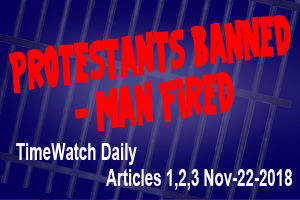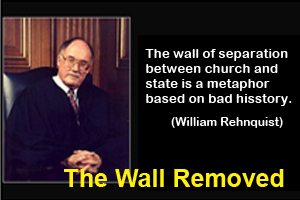
The Deconstruction
TimeWatch Editorial
February 25, 2017
Philip Rucker and Robert Costa reporting on the February 23rd meeting of the Conservative Political Action Conference, quoted Steve Bannon as saying that the media is "adamantly opposed to" the president's agenda. The article was published in The Washington Post, under the heading, “Bannon vows a Daily Fight for Deconstruction of the Administrative State.” The first question that is posed then would be what is the Administrative State? The Heritage Foundation on November 20, 2007 published an article entitled “The Birth of the Administrative State: Where It Came From and What It Means for Limited Government.” The writer was Ronald Pestritto. Here is how the article describes “the Administrative State.”
“For those who hold the Constitution of the United States in high regard and who are concerned about the fate of its principles in our contemporary practice of government, the modern state ought to receive significant attention. The reason for this is that the ideas that gave rise to what is today called "the administrative state" are fundamentally at odds with those that gave rise to our Constitution.” Ronald Pestritto, “The Birth of the Administrative State: Where It Came From and What It Means for Limited Government.” The Heritage Foundation, November 20, 2007
Pestritto makes the point that The Administrative State then is really the abandonment of the separation of powers here is how he describes it. he describes this Administrative period as beginning with President Wilson’s period of government. Listen to this:
“In his New Freedom campaign for President in 1912, for instance, Wilson urged that the rigid, mechanical, "Newtonian" constitutionalism of the old liberalism be replaced by a "Darwinian" perspective, adjusting the Constitution as an organic entity to fit the ever-changing environment. Wilson also blamed separation-of-powers theory for what he believed to be the inflexibility of national government and its inability to handle the tasks required of it in the modern age:” Ronald Pestritto, “The Birth of the Administrative State: Where It Came From and What It Means for Limited Government.” The Heritage Foundation, November 20, 2007
As contained in “Wilson, "The Art of Governing," November 15, 1885, in “The Papers of Woodrow Wilson” we find the following concept.
“Wilson saw the separation of powers as a hindrance because efficiency was to be valued over anything else. As he claimed in 1885, efficiency had become the pre-eminent principle in government because history had brought us to an age where the administrative functions of government were most important: "The period of constitution-making is passed now. We have reached a new territory in which we need new guides, the vast territory of administration." Ronald Pestritto, “The Birth of the Administrative State: Where It Came From and What It Means for Limited Government.” The Heritage Foundation, November 20, 2007
We will certainly explore this some more as time progresses, and the actions of this new Administration expand, but what is clear is that the actions presently being taken are not accidental. They are based upon a specific philosophical view of the world. Charles J. Cooper
Writing for the National Affairs Website in the fall of 2015, under the topic, “Confronting the Administrative State,” said the following.
“Wilson's vision of man — and his trust in consolidating power in the hands of "experts" — became the intellectual framework for the rise of the administrative state in the first half of the 20th century. Its premises gradually became accepted and engrained in the legal culture of the day and soon became evident in the jurisprudence of the Supreme Court. Piece by piece, the Constitution's separation of powers was dismantled by the justices.” Charles J. Cooper , “Confronting the Administrative State,” the National Affairs, the fall of 2015
Simply reading the above paragraph might not reveal the point that Bannon and his crew is making. The idea that a cumulative number of individuals might be included in the decision making process of government, is repulsive to the Bannon crew. The very idea that the legislative might have oversight regarding orders given by the president is not an acceptable option to this white house. The following paragraph clearly defines the objective of Deconstructing the Administrative State.
“The Court's first victim was Article II of the Constitution, which provides, simply enough, that "the executive Power shall be vested in a President." As Justice Antonin Scalia correctly observed in his Morrison v. Olson dissent, "[T]his does not mean some of the executive power, but all of the executive power." And, if that principle is to have any force, it requires that the president have the authority to remove — for any reason — those who exercise executive power. That is because, again in Justice Scalia's words, "once an officer is appointed, 'it is only the authority that can remove him, and not the authority that appointed him, that he must fear and, in the performance of his functions, obey.'".” Charles J. Cooper , “Confronting the Administrative State,” the National Affairs, the fall of 2015
The objective here is simple. There is a desire to place in the hand of the President, ALL the executive, decision making power. There are many descriptions for such a system of government. They have all existed before. The question is, will the United States abandon the separation of powers in exchange for centralized authoritarian control? the answer lies in the future.
Cameron A. Bowen







